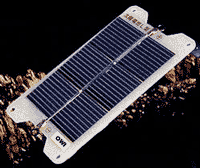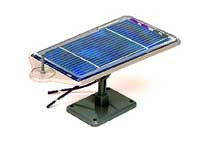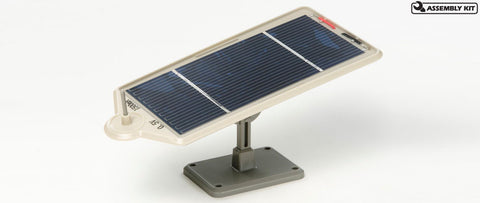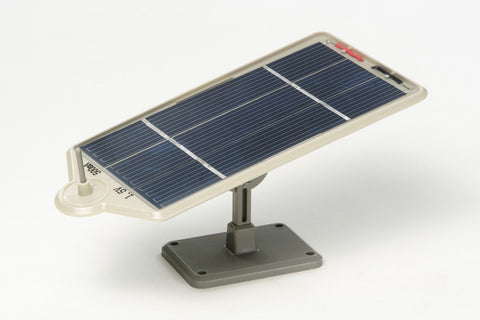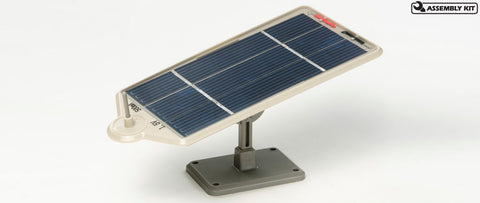Microcontrollers
- Arduino
- AVR Microcontrollers & Programmers
- Basic Stamp Modules and Starter Kits
- LilyPad E-Textiles
- PIC Microcontrollers & Programmers
- Rasberry Pi
Robot Kits
Electronics Parts
- Capacitors
- Crystals
- Diodes and Rectifiers
- Displays and Annunciators
- IC Sockets & Heat Sinks
- ICs
- LEDs and Photodetectors
- Resistors and Potentiometers
- Sensors
- Switches and Relays
- Transistors & FETs
- USB, Web & Memory Card Interfaces
- Wireless Communications
Hardware
- 3D Printers and Supplies
- Batteries
- BEAM Robot Kits
- Cables
- Glue
- Headers
- Metal Frame
- Mold Making and Casting Material
- Motor Controllers
- Motors
- Other Parts
- Paints
- Power
- Project Boxes
- Prototyping SMT by Schmartboard
- Prototyping
- Screws, Nuts & Bolts
- Servos
- Solar Cells And Education Kits
- Standoffs and Spacers
- Wheels
Tools
Education and Fun
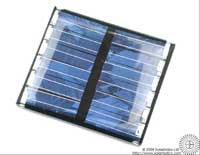
Small Solar Cell 37 x 33mm, 6.7V, 20mA
This is a great solar panel which outputs a high enough voltage to directly drive electronic circuits or charge batteries.
The panel is built on a sturdy PCB substrate and is epoxy encapsulated to withstand rough handling.
The PCB includes solder pads to populate a simple "Miller Solarengine" which lets you pulse-power high current draw devices, like motors and electromagnets, that would otherwise require a large number of parallel cells. The addition of the circuit pads does not interfere with using this as a simple solar panel.
The panel is really two sub-panels connected in series. The series connector is accessible as a PCB trace on the back. You can cut that trace and wire the cells in parallel to turn this into a 3.3V, 80mA panel.
The panel is built on a sturdy PCB substrate and is epoxy encapsulated to withstand rough handling.
The PCB includes solder pads to populate a simple "Miller Solarengine" which lets you pulse-power high current draw devices, like motors and electromagnets, that would otherwise require a large number of parallel cells. The addition of the circuit pads does not interfere with using this as a simple solar panel.
The panel is really two sub-panels connected in series. The series connector is accessible as a PCB trace on the back. You can cut that trace and wire the cells in parallel to turn this into a 3.3V, 80mA panel.
| Brand: | Solarbotics |
| Brand Part Number: | SCC3733 |
| Our Part Number: | h1660 |
We Also Recommend

